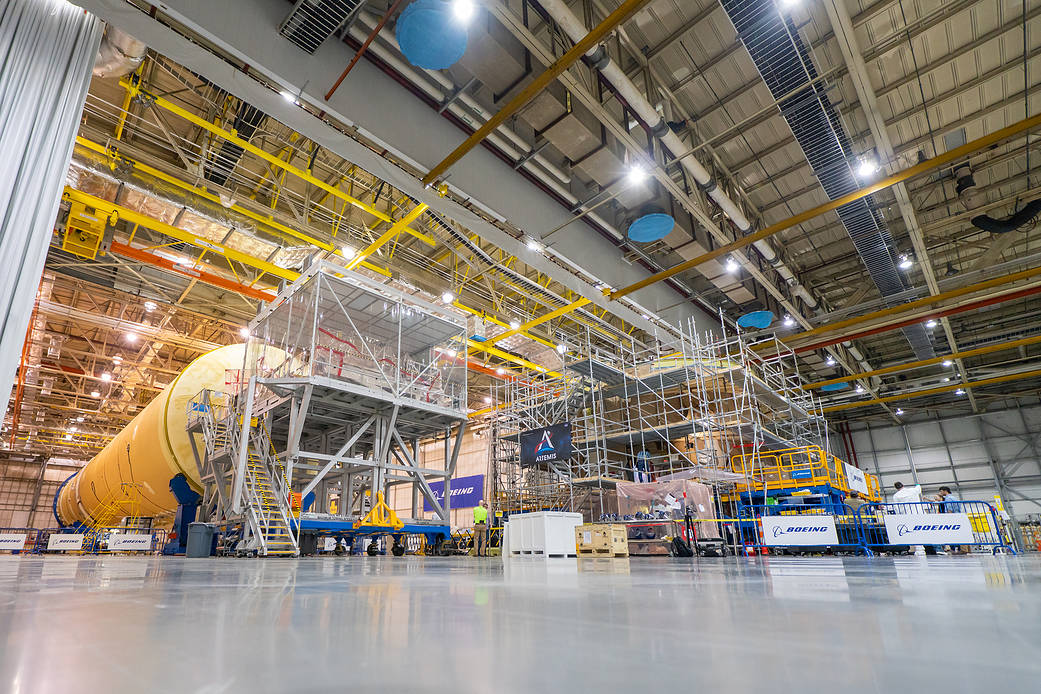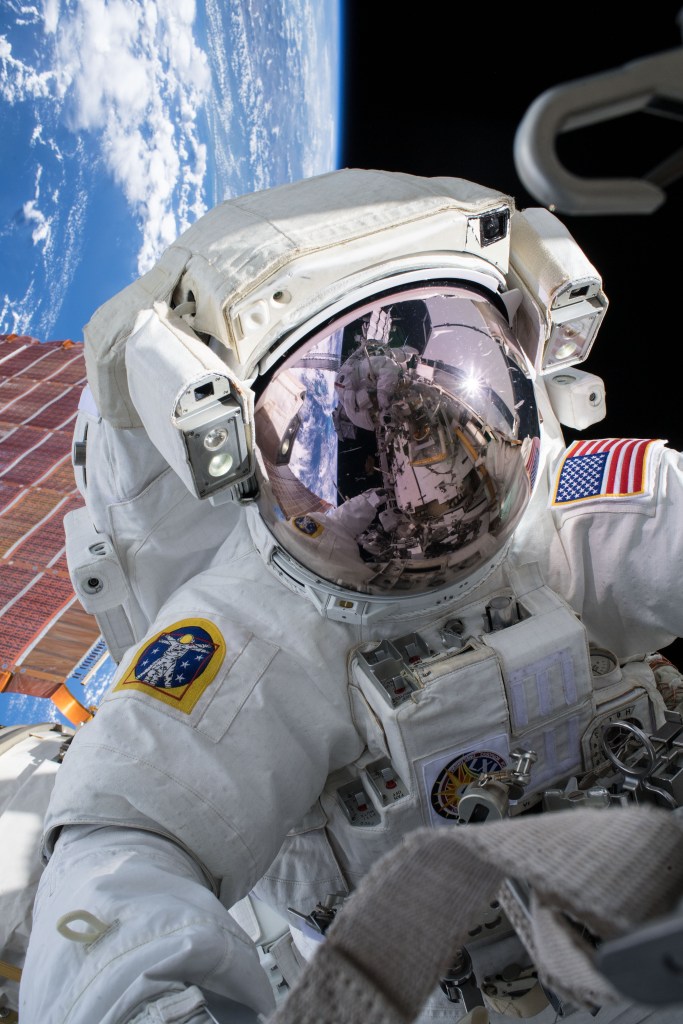
The Space Launch System (SLS) rocket engine section, the lowest portion of the massive core stage for NASA’s rocket, is assembled and ready to be mated to the rest of the rocket’s core stage. The engine section, shown on the right beside the rest of the assembled stage, was covered with scaffolding used for assembly and checkout. On Aug. 29, NASA and Boeing technicians at NASA’s Michoud Assembly Facility in New Orleans completed assembly and functional testing on the engine section for Artemis I, the first flight of SLS and NASA’s Orion spacecraft. Now, technicians are removing the scaffolding structures and moving the engine section to another part of the facility to prepare it for integration with the rest of the core stage. Once the engine section is joined to the rest of the core stage, the main structure of the stage will be complete. In September, the team will begin the complicated task of connecting the four RS-25 engines to the main propulsion systems inside the engine section. The engine section is one of the most complex and intricate parts of the rocket that will help power the Artemis missions to the Moon. In addition to its miles of cabling and hundreds of sensors, it is a crucial attachment point for the four RS-25 engines and two solid rocket boosters that produce a combined 8.8 million pounds of thrust at liftoff and flight.
NASA is working to land the first woman and the next man on the Moon by 2024. SLS and NASA’s Orion spacecraft, along with the Gateway in orbit around the Moon, are the backbone for deep space exploration. SLS is the only rocket that can send Orion, astronauts and supplies to the Moon in a single mission.


























